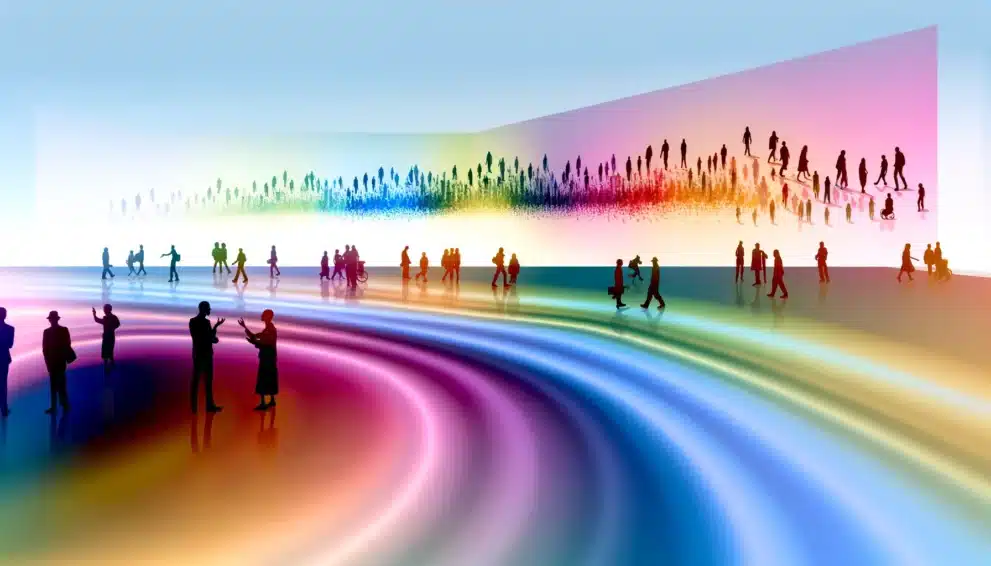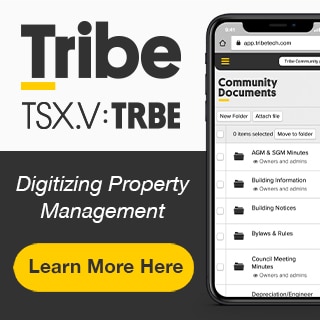
“In a spectrum” refers to the concept of viewing certain characteristics, traits, or identities as existing within a broad and varied range rather than being limited to binary options or fixed categories. This approach is especially relevant in discussions about sexual orientation, gender identity, and many other aspects of human experience where individual variations are recognized and acknowledged.
When we say something exists “in a spectrum,” we’re acknowledging that it can’t be neatly categorized into just one of two options. Instead, there’s a continuum of possibilities that can include a wide diversity of experiences, expressions, and identities. This perspective allows for a more nuanced understanding of complex human characteristics, recognizing that people may identify or express themselves in ways that are unique and fluid, rather than fitting strictly into predefined boxes.
For example:
- Gender Identity Spectrum: Recognizes that gender identity is not just male or female, but can include non-binary, genderqueer, agender, and many other identities, reflecting the diverse ways individuals experience and understand their gender.
- Sexual Orientation Spectrum: Acknowledges that sexual orientation is not limited to heterosexual or homosexual, but includes bisexual, pansexual, asexual, and more, allowing for the wide range of how individuals experience attraction.
Using “in a spectrum” helps promote inclusivity and respect for individual differences, emphasizing that human experiences and identities are complex and should not be oversimplified.
The concept of viewing certain aspects of human identity and experience as existing within a spectrum has been developing over many years, but it has gained significant prominence and widespread usage in discussions around gender and sexuality particularly in the late 20th and early 21st centuries. While it’s difficult to pinpoint the exact moment the phrase “in a spectrum” or the idea of a spectrum in these contexts came about, its roots can be traced back to the evolving understanding of psychology, sexuality, and gender studies over decades.
The broader acceptance and use of the term coincide with the growing recognition of the diversity of sexual orientations and gender identities beyond the traditional binary classifications of male/female and heterosexual/homosexual. This recognition has been influenced by scientific research, cultural shifts, and the advocacy of LGBTQ+ communities.
In terms of sexual orientation, the Kinsey Scale introduced in 1948 by Alfred Kinsey, Wardell Pomeroy, and Clyde Martin is one of the earlier scientific attempts to categorize human sexuality on a continuum rather than a binary system. The Kinsey Scale ranged from exclusively heterosexual (0) to exclusively homosexual (6), suggesting that sexual orientation can fall anywhere along this spectrum.
The concept of gender as a spectrum has similarly evolved, with significant contributions from the fields of sociology, psychology, and the efforts of transgender and gender-nonconforming individuals to gain recognition and rights. The distinction between biological sex and gender as a social construct has led to a deeper understanding that gender identity is not strictly binary and can encompass a wide range of experiences and expressions.
Overall, while the use of “in a spectrum” to describe these aspects of human experience has become more common in recent years, the underlying ideas have been developing for much longer, reflecting ongoing shifts in societal attitudes, scientific understanding, and cultural practices.
The phrase “in a spectrum” and the concept of viewing certain characteristics or identities as existing within a spectrum rather than in binary categories are used across a wide range of mediums, including online platforms, in books, on television, and in academic and popular discourse. Here’s how it appears across these different media:
- Online: The concept of a spectrum, especially relating to gender and sexuality, is widely discussed on social media, blogs, forums, and educational websites. Online communities and advocacy groups use the term to educate and provide information on the diversity of human experiences. For example, the phrase is used on Tinder frequently.
- Books: Both non-fiction and fiction books address the idea of spectrums in human identity. Non-fiction works, including academic texts, psychology books, and social commentary, often explore the nuances of gender and sexual orientation spectrums. Fiction and memoirs may explore these themes through character development and storytelling.
- Television and Film: TV shows and movies increasingly incorporate characters and narratives that reflect the diversity of human experience in terms of gender identity and sexual orientation. Discussions about characters or themes being “on a spectrum” or existing within a spectrum of identities or orientations can sometimes be part of the dialogue or thematic exploration.
- Academic and Educational Materials: Universities, schools, and educational programs that cover topics like gender studies, psychology, and social sciences often use the concept of a spectrum to teach about the complexity of human identities. Educational materials may include textbooks, lecture notes, and online courses that discuss these ideas.
- Public Speaking and Conferences: Talks, seminars, and conferences on topics related to social justice, human rights, psychology, and health frequently address the concept of spectrums. Speakers use the term to help audiences understand the diversity and fluidity of gender and sexuality, among other topics.
- Journalism and Media Outlets: Articles, opinion pieces, and documentaries that focus on social issues, science, and culture often use the spectrum concept to discuss gender, sexuality, mental health, and other areas where human experiences are diverse and cannot be easily categorized.
In each of these mediums, the use of “in a spectrum” serves to acknowledge and validate the wide range of human experiences, promoting a more inclusive and nuanced understanding of identity and personal characteristics.



 Share
Share Tweet
Tweet Share
Share




Comment